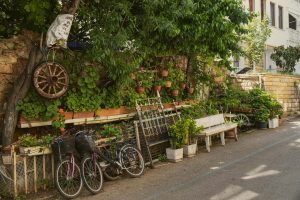Silk Road Revival: Retracing Ancient Routes via Electric Camel Caravans
The Silk Road, a network of ancient trade routes connecting the East and the West, has captured the imagination of travelers and traders for centuries. While it may have declined in significance over time, its memory and legacy still linger on. In today’s world, with advancing technology and the need for sustainable transportation, the Silk Road is undergoing a revival like never before. And this time, it’s being done via electric camel caravans.
Echoing Ancient Routes with Modern Means
The revival of the Silk Road takes us back to a time when traders would traverse through vast deserts and mountains, braving harsh conditions and unknown territories. The only means of transportation available to them were camels, which served as their lifeline through the treacherous journey. Today, with the emergence of electric vehicles, the camel caravan has been given a modern makeover.
Introducing the Electric Camel Caravan
Electric camel caravans, also known as e-camels, are a transformation from the traditional fuel-powered camels to environmentally-friendly electric ones. These vehicles are fitted with solar panels that power the batteries, making them completely emission-free and self-sufficient. With the advancement in technology, e-camels are also equipped with modern amenities, such as GPS navigation and air conditioning, making the journey more comfortable and efficient.
The Benefits of E-Camel Caravans
The use of e-camels for the revival of the Silk Road brings many benefits, both for the environment and the economy. The switch to electric vehicles reduces carbon emissions, contributing to the fight against climate change. Additionally, the use of solar panels for charging the batteries reduces the dependence on fossil fuels, promoting sustainable energy practices. From an economic standpoint, e-camel caravans provide employment opportunities for local communities along the Silk Road, boosting their economy and preserving their cultural heritage.
Retracing Ancient Routes
As electric camel caravans gain popularity, more and more travelers are eager to experience the Silk Road in its revived form. The journeys take tourists through some of the most remote and breathtaking landscapes, passing through ancient cities and historic sites. The journeys are often curated to offer participants a taste of the local culture and traditions, staying true to the essence of the Silk Road.
The Rise of Sustainable Tourism
The revival of the Silk Road through e-camel caravans has also brought about a rise in sustainable tourism. With responsible travel practices and a focus on preserving the heritage sites along the route, tourists are not only able to experience the Silk Road but also contribute to its conservation. This unique form of tourism not only benefits the local communities but also promotes cultural exchange and understanding among travelers.
The Future of the Silk Road
The revival of the Silk Road through electric camel caravans is a promising step towards sustainable and responsible travel. As the world strives towards more eco-friendly means of transportation, e-camel caravans may become a popular choice for tourists seeking an authentic and unique experience. Moreover, with the ongoing developments in technology, the e-camels are expected to become more efficient and accessible, making the Silk Road a viable option for travelers of all ages and backgrounds.
The Legacy Continues
The revival of the Silk Road via electric camel caravans is a testament to the resilience and longevity of this ancient trade route. By combining the past with the present, the Silk Road legacy continues to thrive, connecting people and cultures from different parts of the world. Let’s hope that this revival sparks a new era of sustainable and responsible travel, one that echoes the spirit and purpose of the ancient Silk Road.











